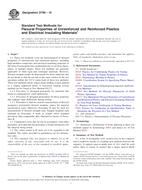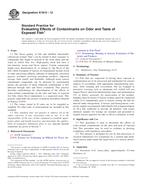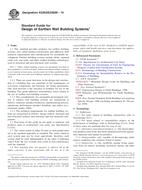1.1 This practice covers the determination of the integrity of water filtration membrane elements and systems using air based tests (pressure decay and vacuum hold), soluble dye, continuous monitoring particulate light scatter techniques, and TOC monitoring tests for the purpose of rejecting particles and microbes. The tests are applicable to systems with membranes that have a nominal pore size less than about 1 µm. The TOC, and Dye, tests are generally applicable to NF and RO class membranes only.
1.2 This practice does not purport to cover all available methods of integrity testing.
1.3 The values stated in SI units are to be regarded as standard. No other units of measurement are included in this standard.
1.4 This standard does not purport to address all of the safety concerns, if any, associated with its use. It is the responsibility of the user of this standard to establish appropriate safety and health practices and determine the applicability of regulatory limitations prior to use.
7.1 This practice covers the determination of integrity for membrane systems using the pressure decay test (PDT) and vacuum decay test (VDT).
7.2 The tests may be used on membranes in all classes, RO through MF, and are suitable for hollow fibers, tubular and flat sheet (such as spiral wound) configurations. However, the PDT is most commonly employed for in-situ testing of UF and MF systems and the VDT for testing NF and RO elements and systems. See Practice D3923.
10.1 This practice is applicable where the membrane system and water source will allow the monitoring of TOC both upstream and downstream of the system, and at least order of magnitude difference from the feed can be measured in the permeate (product) water. See D4839.
16.1 This guide is applicable to RO and NF membrane systems, including those with spiral, tubular or flat sheet configuration elements. The guide describes the application of two soluble dyes, Red Dye # 40 and Rhodamine WT. Both dyes have a molecular weight of approximately 500. See Practice D3923.
22.1 This guide is applicable to MF, UF, NF, and RO membrane systems, including those with spiral, tubular or flat sheet configuration elements. The feedwater must have a particulate concentration that is at least an order of magnitude in higher concentration than that which is detected in the filtrate or permeate stream. This practice is applicable for those membrane systems and that will allow for the monitoring of the water source and in the filtrate or permeate stream as it exists a membrane module.
22.2 For turbidity techniques, the feedwater should have a turbidity of at least 0.5 NTU (500 mNTU) and for particle counting techniques, the feedwater should have a count concentration of at least 1 particle per mL greater than the defined size threshold that is being applied.
22.3 This practice provides for the use of two different laser based particulate detection technologies: optical particle counting (light obscuration designs) and laser turbidity (light scattering). , Liquid or sensor multiplexing with either of these two technologies is possible and can increase sensitivity and facilitate defect identification.
22.4 This method provides for the continuous monitoring of each sample point. Flow through the sample point (that is, the sensor) is continuous, and the measurement frequency is at least every 15-min during filtration.
Product Details
- Published:
- 05/01/2010
- Number of Pages:
- 20
- File Size:
- 1 file , 630 KB


